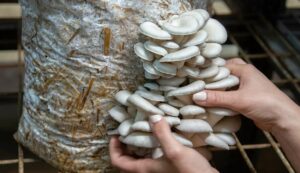Mushroom Cultivation: Cultivate these varieties of mushrooms in summer and you will become rich
Mushroom Cultivation: In Uttar Pradesh, the Saharanpur district is the leading producer of mushrooms. The mushroom is a winter veggie. Summer has arrived. Making the correct mushroom variety choice is crucial for farmers who want to grow mushrooms in the summer. The most crucial factor in mushroom production is temperature, which not everyone can control. The whole crop of mushrooms spoils if the temperature changes even a little. From packing the bags until harvesting the fruits, there are several safety measures that must be followed while growing mushrooms in the summer.

Extremely high temperatures and high humidity
Farmers may grow oyster mushrooms and milky (dudhiya) mushrooms in the summer. Even in the heat, they produce a fair amount. This is the first native mushroom to be commercially produced in India, and it thrives in temperatures between 28 and 38 degrees Celsius and humidity levels between 70 and 80%. It is the mushroom that is ready the quickest and is also known as the summer mushroom. Although it may be grown all year round, farmers usually choose to plant it in the summer. It grows readily in a shed, hut, cottage, or open-air space. ‘Shitake Mushroom’ and ‘Ganoderma Mushroom’ may also be cultivated in the summer.
Dr. IK Kushwaha, the professor and in charge of Krishi Vigyan Kendra, informs the media that April has begun. Between 25 and 40 degrees Celsius is the temperature range. This is the season to plant the milky mushroom, commonly known as the Dudhiya Mushroom. This is also the period to cultivate “Ganoderma Mushroom” and Shitake Mushroom. It will be beneficial for farmers to grow milky mushrooms if the temperature is between 35 and 40 degrees.
Two to three months of production
According to Dr. IK Kushwaha, mushrooms are fungi, and fungi need moisture to flourish. Without moisture, no fungus can thrive. During this season, Saharanpur farmers might grow milky mushrooms. One month after the bags are made, it begins to be produced. It takes two to three months to produce.





